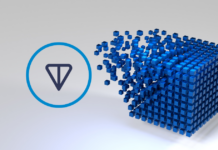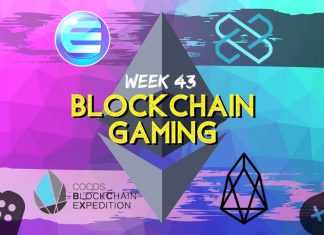Cartesi connects Linux and traditional programming environments to the blockchain. This article will describe Cartesi DApps and list five steps in making Cartesi DApps.
Real-world decentralized apps, or DApps, are currently somewhat restricted in complexity. It is because of the inherent limitations of existing blockchain technologies. Those limitations reach any developer who wants to enter the blockchain industry. Therefore, this article will discover how Cartesi can provide developers with better conditions to make dApps.
Development Life Cycle of a Cartesi DApp
The platform has created several stages that cover the whole development life cycle of a DApp. Furthermore, the goal is to allow developers to use their typical mainstream development environment for most of their projects. Therefore, Cartesi will provide the required tools and infrastructure to make that possible.
Searching for new promising projects?🔮 How about @cartesiproject? If you want to know more, read the intro article ➡️ https://t.co/ebyYKMFQkY
If you are already familiar with the project, try the #staking option🔥
🇬🇧 https://t.co/BOUGX5EGTB
🇹🇷 https://t.co/1UYgrPvaN6 pic.twitter.com/cFiINJE1Xm— Everstake (@everstake_pool) December 19, 2021
Therefore, here are the five stages to follow:
Stage 1 – Design
This would include the application’s overall conceptual design. It will describe the significant scope of the front-end and back-end logic and general technical needs (e.g., whether it will use an SQL database, execute a trained AI model, etc.)
Stage 2 – Proof of Concept
Checkpoint stage for developing a proof of concept. It will ensure that the proposed back-end logic and tech stacks can be executed inside a Cartesi Machine. This stage could include cross-compiling a library for Cartesi’s RISC-V Linux OS. Also, it will ensure that the planned applications run smoothly on the Cartesi Machine.
Stage 3 – Implementation
This is the DApp development life cycle stage where the front-end and back-end logic are implemented. This represents most of the work in the app’s development life cycle.
The DApp developer will use a Cartesi Rollups Host Environment to implement the DApp’s front-end and back-end modules. It will utilize standard mainstream technologies and tools at this stage.
We're proud to announce the alpha release of #Cartesi Rollups!
Ready to develop your DApp in Linux using your favorite IDE, programming stack and tools?
Read our overview https://t.co/ceaYIWmvt4, check out our repo https://t.co/xGJcOyNOrP and let's code! $CTSI pic.twitter.com/597afrmWTp
— Cartesi (@cartesiproject) December 29, 2021
Furthermore, this functionality might be a game-changer for DApp development efficiency. The rollups Host Environment uses a Docker Compose file.
Stage 4 – Packaging
At this point, the back-end component is ready to operate within a Cartesi Machine, executed by an actual Layer-2 node. The possibility of achieving it within a Cartesi Machine should have been determined at Stage 2. Therefore, all that remains is to test if the whole DApp implementation works.
Stage 5 – Deployment
The final stage is to deploy the application after successfully testing it. This will require a local test with a Hardhat instance serving as a local blockchain, but the primary goal is to deploy it to a remote blockchain network.
About Cartesi’s dApps
Cartesi is the first blockchain-based operating system. Its Layer-2 solution connects Linux and traditional programming environments to the blockchain. Therefore, developers may now use standard software tools, libraries, and services to build scalable smart contracts.
Finally, the platform bridges the gap between conventional software and blockchain by introducing Linux to blockchain applications. Also, it allows millions of new entrepreneurs and their engineers to join the blockchain revolution.
Also, for the more great info, join us on Telegram to receive free trading signals.
Above all, for more cryptocurrency news, check out the Altcoin Buzz YouTube channel.
Disclaimer
The information discussed by Altcoin Buzz is not financial advice. This is for educational, entertainment, and informational purposes only. Any information or strategies are thoughts and opinions relevant to the accepted levels of risk tolerance of the writer/reviewers and their risk tolerance may be different than yours. We are not responsible for any losses that you may incur as a result of any investments directly or indirectly related to the information provided. Bitcoin and other cryptocurrencies are high-risk investments so please do your due diligence. This article has been sponsored by Cartesi. Copyright Altcoin Buzz Pte Ltd.



























